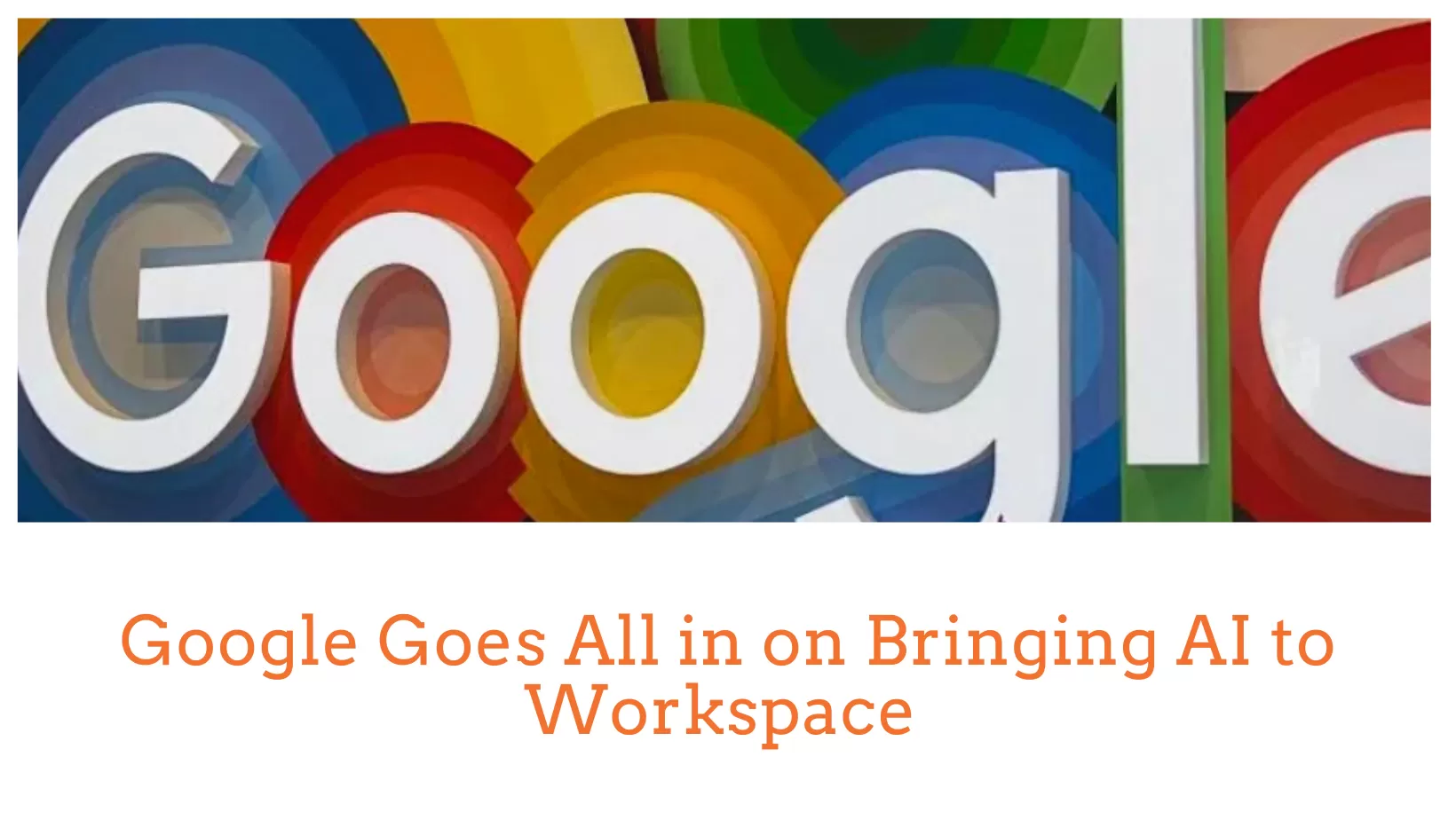Google Cloud Outage on June 12, 2025: A Comprehensive Overview

Google Goes All in on Bringing AI to Workspace
On June 12, 2025, a significant outage struck Google Cloud, disrupting a wide array of services and sending ripples across the internet. The incident, which began in the early afternoon and persisted for several hours, affected Google Cloud Platform (GCP) products, Google Workspace services, and numerous third-party platforms reliant on Google’s infrastructure. This article provides a detailed account of the outage, including its timeline, causes, impacts, and resolution, based on the latest available information.
Timeline of the Outage
The outage commenced around 1:50 p.m. ET (10:50 a.m. PT) on June 12, 2025, when Google Cloud’s status page first reported issues with multiple products at 10:51 a.m. PT. User reports surged rapidly, with Downdetector recording approximately 14,729 complaints in the United States alone by 2:32 p.m. ET, peaking slightly earlier at around 14,000 reports by 11:25 a.m. PT. The disruptions continued throughout the afternoon, with Google providing periodic updates on its status page.
By 2:46 p.m. ET, Google officially acknowledged the issue, followed by further updates at 3:41 p.m. ET and 4:16 p.m. ET, indicating that engineers were actively investigating. While most services were restored by the evening of June 12, some residual issues lingered into June 13, 2025. As of the latest reports, Google confirmed that the majority of affected services had returned to normal operation.
Scope of Affected Services
The outage impacted a broad spectrum of Google Cloud services, highlighting the platform’s critical role in the digital ecosystem. Key affected GCP products included:
- Cloud Storage: Essential for data storage and retrieval.
- BigQuery: Google’s serverless data warehouse solution.
- App Engine: A platform for building scalable web applications.
- Vertex AI: Used for machine learning and AI model deployment.
- Google Compute Engine: Providing virtual machines for computing needs.
- Firebase: A backend platform for mobile and web applications.
Additionally, Google Workspace services, which millions rely on for productivity, were significantly disrupted. These included:
- Gmail: Email services faced access and delivery issues.
- Google Drive: Users reported problems accessing and syncing files.
- Google Meet: Video conferencing services were unavailable for some.
- Google Docs, Google Calendar, and Google Chat: Collaboration tools experienced intermittent failures.
The outage’s reach extended beyond Google’s own services, affecting third-party platforms that depend on GCP infrastructure. Notable examples include:
- Cloudflare: A major content delivery network and cybersecurity provider, which reported disruptions in its internal services, such as build/test infrastructure and analytics stacks. This led to errors in customer dashboards and some key-value-backed products, prompting user reports of a “Cloudflare outage.”
- OpenAI: Users encountered login and service issues, as OpenAI’s platform relies on GCP.
- Shopify: The e-commerce platform faced operational challenges.
- Spotify: Music streaming services were disrupted for some users.
- Google Home: Smart home functionalities were impacted.
The geographic scope was extensive, with connectivity issues reported in multiple regions, including the United States, Europe, and Asia. Specific problems were noted in the us-east5-c zone, indicating a localized infrastructure failure that contributed to the broader outage.
Root Cause
The primary cause of the outage was a failure in Google Cloud’s Identity and Access Management (IAM) system, which is responsible for authentication and policy enforcement across GCP services. Some reports suggest this issue was linked to a service internally referred to as “Chemist,” though Google has not officially confirmed this detail. The IAM failure triggered a cascade of API and service errors, disrupting both Google’s own products and those of dependent platforms.
The interconnected nature of modern cloud infrastructure amplified the impact. For instance, Cloudflare’s reliance on GCP for certain internal services meant that Google’s outage indirectly caused errors in Cloudflare’s customer-facing products. This domino effect underscored the fragility of internet services when a major cloud provider experiences disruptions.
Impact on Businesses and Users
The outage had far-reaching consequences, affecting businesses, developers, and individual users worldwide. For companies relying on GCP for critical operations, the disruptions likely led to productivity losses, delayed transactions, and customer dissatisfaction. Cloudflare, for example, saw its stock drop by approximately 5% during the outage, reflecting investor concerns about the incident’s impact.
Third-party platforms like Shopify and OpenAI faced operational challenges, potentially affecting merchants and AI service users. Spotify’s streaming interruptions frustrated consumers, while Google Workspace disruptions hampered remote work and collaboration for countless organizations. The outage also highlighted the internet’s dependency on a handful of cloud providers, as a single failure in Google’s infrastructure impacted a diverse array of services.
Despite the widespread disruptions, Google confirmed that no data loss occurred, as its cloud infrastructure is designed to be resilient against such failures. This provided some reassurance to users concerned about the safety of their data.
Google’s Response and Resolution
Google responded promptly to the outage, with its status page providing real-time updates starting at 2:46 p.m. ET. Engineers quickly identified the IAM system failure as the root cause and began working on mitigation strategies. By the evening of June 12, Google reported that most affected services had been restored, though some issues persisted into the following day.
As of June 13, 2025, Google’s status page indicated that the majority of services were back to normal. The company continued to monitor its systems to ensure stability and prevent recurrence. Google has not yet released a detailed post-mortem report, but such reports are standard practice and may provide further insights into the outage’s causes and lessons learned.
Broader Implications
The June 12, 2025, Google Cloud outage serves as a stark reminder of the internet’s reliance on centralized cloud infrastructure. With Google Cloud powering a significant portion of online services, disruptions of this magnitude can have global consequences. The incident also raised questions about the resilience of third-party platforms like Cloudflare, which, despite their robust architectures, remain vulnerable to upstream failures.
For businesses, the outage underscored the importance of diversifying cloud providers or implementing multi-cloud strategies to mitigate risks. For consumers, it highlighted the fragility of the digital services they rely on daily, from email and document editing to music streaming and e-commerce.
Conclusion
The Google Cloud outage on June 12, 2025, was one of the most significant disruptions to hit the platform in recent years, affecting a wide range of services and third-party providers. Caused by a failure in the IAM system, the incident disrupted Google’s own products, including Gmail and Google Drive, as well as external platforms like Cloudflare, OpenAI, Shopify, and Spotify. While Google restored most services by the evening of June 12, the outage left a lasting impression on businesses and users alike.
For the latest updates, users can visit Google’s official status page at status.cloud.google.com. As the digital landscape continues to evolve, this incident will likely prompt renewed discussions about cloud reliability, redundancy, and the need for robust contingency plans.
Note: This article is based on information available as of June 13, 2025, at 8:05 p.m. WAT. Some details, particularly from X posts, have been cross-referenced for accuracy, but unverified claims may exist. For real-time updates or deeper analysis of specific sources, further searches can be conducted upon request.
Timeline and Scope
- Start of Outage: The outage began around 1:50 p.m. ET (10:50 a.m. PT) on June 12, 2025, with Google Cloud’s status page reporting issues with multiple products at 10:51 a.m. PT.
- Affected Services: The outage affected numerous Google Cloud Platform (GCP) products, including Cloud Storage, BigQuery, App Engine, Vertex AI, Google Compute Engine, Firebase, and Google Workspace services like Gmail, Google Drive, Google Meet, Google Docs, Google Calendar, and Google Chat. Other platforms relying on GCP, such as Cloudflare, OpenAI, Shopify, and Spotify, also reported service disruptions.
- Geographic Impact: The issues were reported across multiple regions, including the U.S., Europe, and Asia, with specific connectivity problems noted in the us-east5-c zone.
- Scale of Reports: At its peak, around 2:32 p.m. ET, there were approximately 14,729 user reports of Google Cloud outages in the U.S. alone, with numbers slightly lower (around 14,000) by 11:25 a.m. PT.
Root Cause
- The primary cause was identified as a failure in Google Cloud’s Identity and Access Management (IAM) system, possibly linked to a service referred to as “Chemist.” This failure disrupted authentication and policy enforcement, leading to API and service errors across GCP and dependent platforms.
- The cascading effect impacted Cloudflare’s internal services (e.g., build/test infrastructure and analytics stack), which rely on GCP, causing errors in dashboards and some key-value-backed products. This led to customer reports of a “Cloudflare outage,” though it was primarily a downstream effect of Google’s issues.
Impact on Other Services
- Cloudflare: Experienced disruptions due to its reliance on GCP for certain internal services, affecting dashboards and some customer-facing products. Cloudflare’s stock reportedly dropped by 5% during the outage.
- OpenAI and Shopify: Reported login and service issues, as their platforms depend on GCP infrastructure.
- Other Platforms: Services like Spotify and Google Home were also affected, with users reporting widespread access issues.
- AWS: Some posts mentioned AWS experiencing related issues, though it’s unclear if this was directly tied to Google Cloud or coincidental.
Response and Resolution
- Google’s Response: Google acknowledged the issue on its status page at 2:46 p.m. ET, with updates at 3:41 p.m. ET and 4:16 p.m. ET indicating ongoing investigations. Google engineers identified the root cause and worked on mitigation.
- Resolution Status: By June 13, 2025, Google reported that most services were back to normal, though some lingering issues persisted. The exact time of full resolution is not specified, but updates suggest significant progress by the evening of June 12.
- Data Safety: No data loss was reported, as Google Cloud’s infrastructure is distinct from consumer services like iCloud.
Additional Notes
- The outage caused significant disruptions across the internet, affecting major websites and services that rely on Google Cloud or Cloudflare.
- While Google’s status page and external reports like Downdetector provided real-time updates, the full scope of the outage’s impact on customers and dependent services is still being assessed.
- Posts on X and web reports suggest this was one of the more significant outages for Google Cloud in recent times, highlighting the dependency of many internet services on its infrastructure.
For the latest updates, you can check Google’s official status page at status.cloud.google.com.






